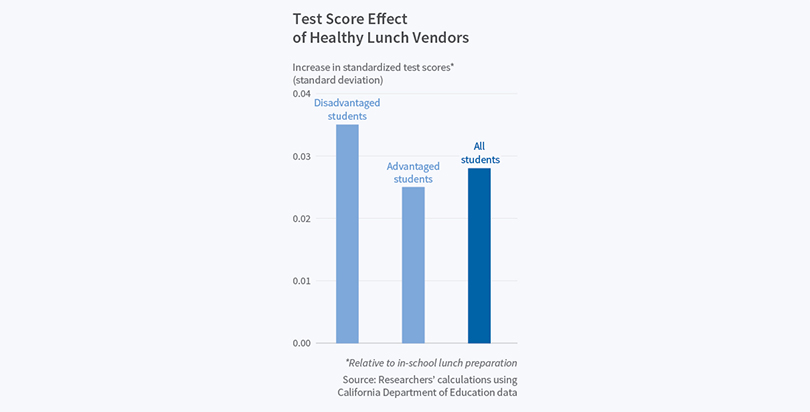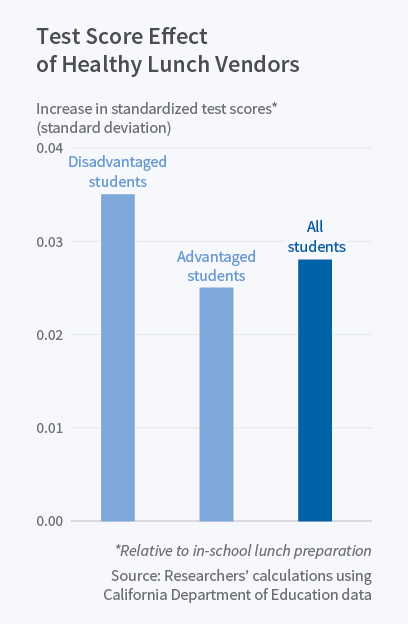You Are What You Eat (at School): Report Shows Healthy School Lunches Tied to Higher Student Test Scores

The study collected data between 2008 and 2013 from roughly 9,700 California public schools, comparing the vast majority that prepare meals in-house to those that contract with outside vendors. Measuring the nutritional quality of the vendors’ meals against the U.S. Department of Agriculture’s Healthy Eating Index, the authors found that students who ate healthy meals at school also scored slightly better on California’s STAR tests (then the state’s standardized examinations of annual student progress, which have since been replaced by another system).
“While this effect is small in magnitude, the relatively low cost of healthy vendors relative to in-house meal preparation makes this a very cost-effective way to raise test scores,” the authors write. Tallying the expense of schools spending more on healthier food, they estimate that an expanded program could achieve test score gains similar to those from Tennessee’s ballyhooed class-size-reduction experiment — all at less than one-sixth the cost ($222 versus $1,368 per student).

Economically disadvantaged students, who are more likely to eat food provided by their schools and less likely to benefit from nutritious food elsewhere, enjoyed an even bigger boost in performance. In the group of schools that contract with outside vendors, the jump is 50 percent larger for low-income students than for those designated as “advantaged.”
At a time when the Trump administration is rolling back Obama-era nutritional mandates around the presence of whole grains, salt, and milkfat — a signature priority of former first lady Michelle Obama — NBER’s analysis raises the question of whether academic improvements will be reversed along with them.
Get stories like these delivered straight to your inbox. Sign up for The 74 Newsletter

;)
